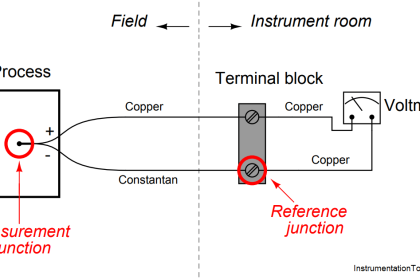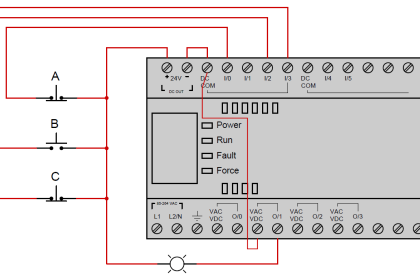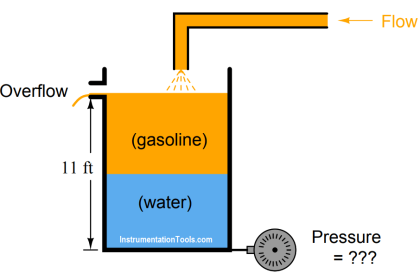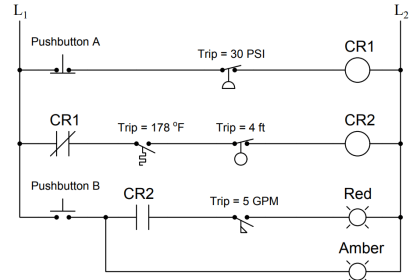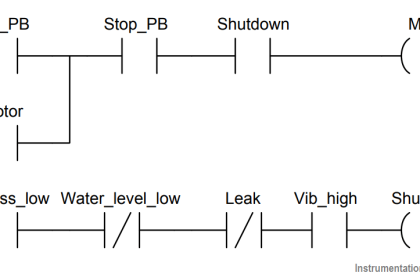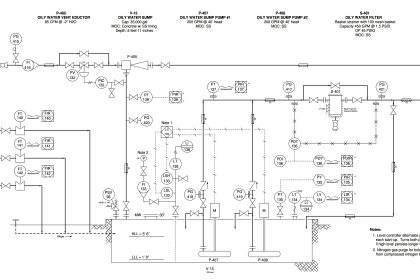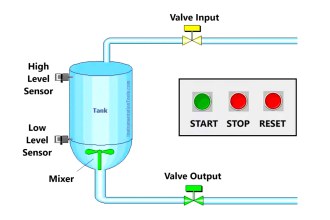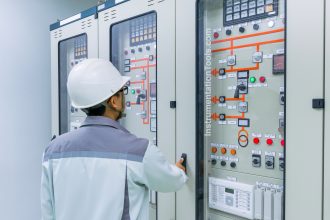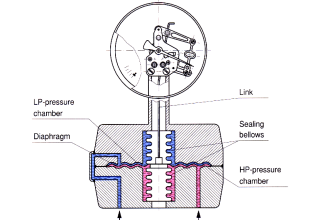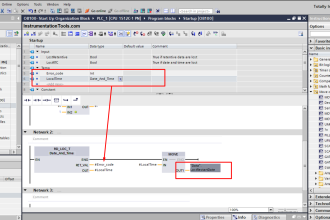In this biogas generation system, cow manure is used as a feedstock to produce methane gas (CH4), which is then used to fuel an engine to turn a generator and make electricity.
The waste heat from the engine is used to maintain the cascaded digesters (“reactors” R-101 and R-102) at optimal temperatures for anaerobic bacteria to digest the manure and produce biogas (approximately 105oF):
Level Transmitter and Gauge
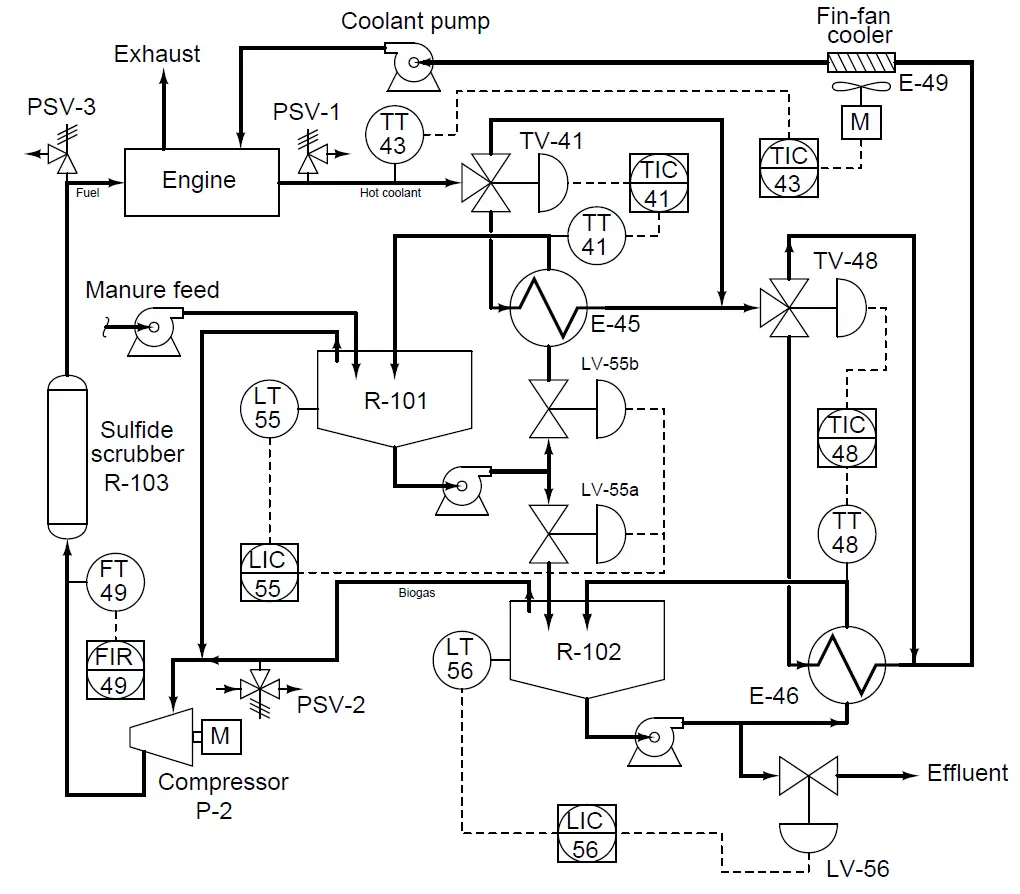
LIC-56 registers a manure level of 3 feet 10 inches, while the operator’s manual gauge reading is only 3 feet 7 inches. The calibrated range of LT-56 is 0 to 4 feet. Your first step is to measure current in the cable connecting LT-56 and LIC-56, and there your digital multimeter (DMM) registers 19.33 mA.
Based on this information, determine at least two potential problems in this system. Also, determine whether or not a hydrostatic (DP) level transmitter would be suitable for measuring manure level in R-102.
Answer:
The current value agrees with the indication at LIC-56, and so the problem is not with LIC-56. This leaves the transmitter (mis-calibrated, plugged impulse line), a change in process density (assuming a hydrostatic DP transmitter) or the operator’s manual measurement of manure level.
Hydrostatic (DP-based) level measurement is appropriate for R-102, assuming either remote seal(s) or purging. Otherwise, solids in the manure will surely plug up the transmitter’s impulse line(s) over time.
Share your answers with us through below comments section.
Read Next:
- Instrument Hook Up Diagram
- Instrumentation and Control MCQ
- Pressure Gauge Datasheet
- Temperature Controller Problem
- Pressure Measurement MCQ
Credits: Tony R. Kuphaldt
